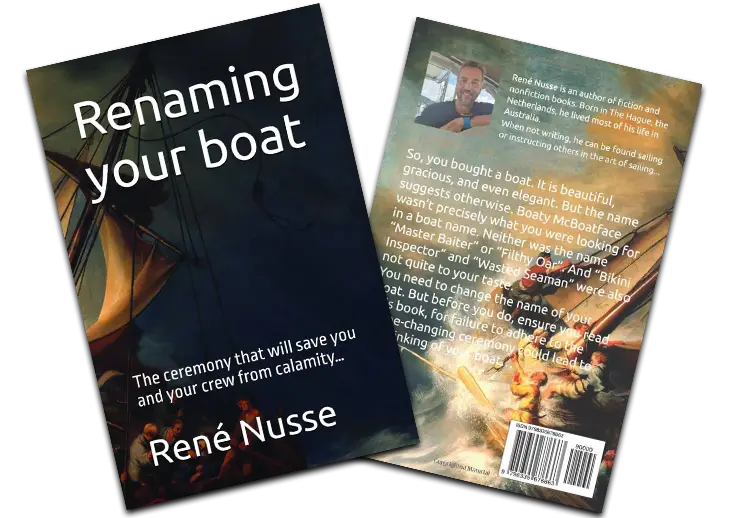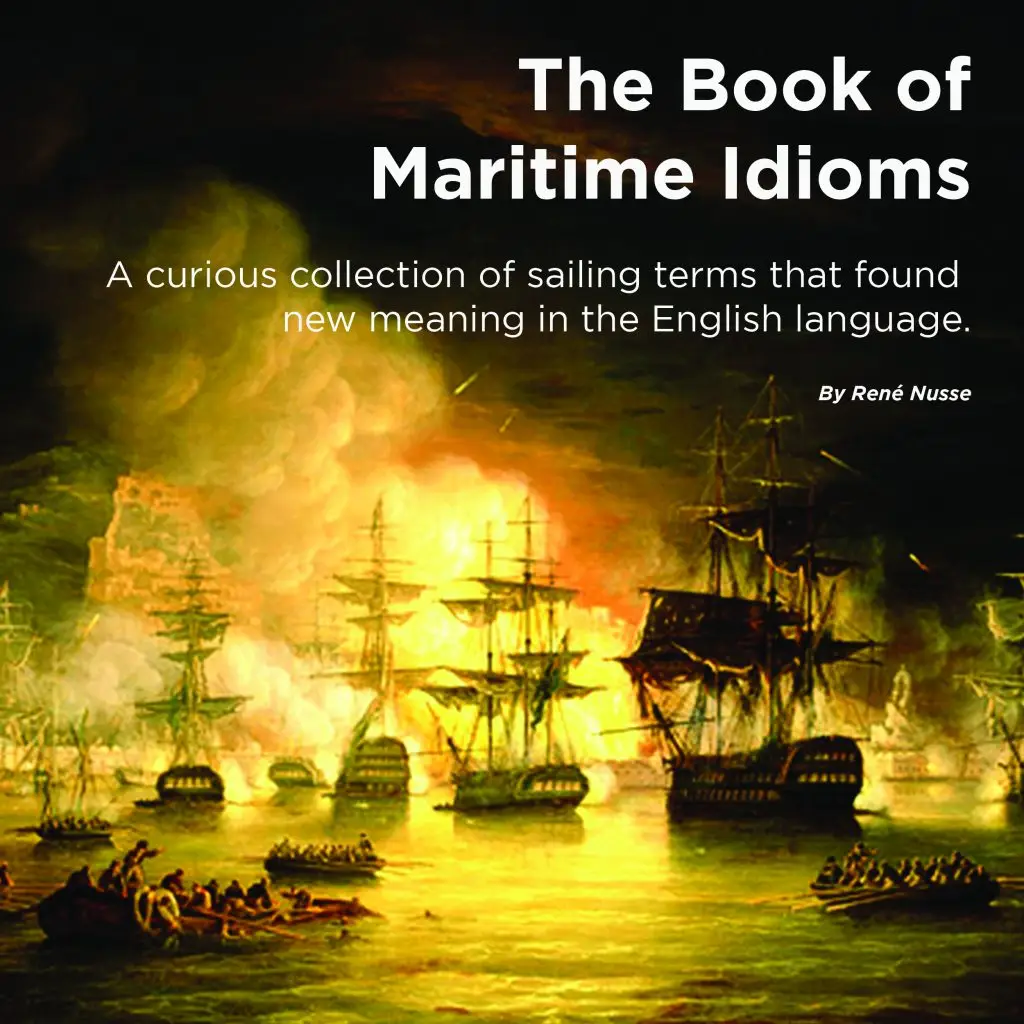Let’s look at what Rule 11 says:
ON THE SAME TACK, OVERLAPPED
When boats are on the same tack and overlapped, a windward boat shall keep clear of a leeward boat.
As opposed to Rule 10 where boats are on opposite tacks, Rule 11 deals only with boats on the same tack and overlapped. I.e., both on a port tack or both on a starboard tack and neither is clear ahead or clear astern. Rule 10 doesn’t go any further than looking at opposite tacks. It generally doesn’t matter what boat is on the windward side, which is on the leeward side, or if boats are overlapped.
However, Rule 11 focuses very much on windward and leeward but only where both are on the same tack and overlapped.
Let’s remember the three main components of Rule 11: “overlapped,“ “windward/leeward,” and “on the same tack.“
Clear Astern and Clear Ahead;
Overlap One boat is clear astern of another when her hull and equipment in normal position are behind a line abeam from the aftermost point of the other boat’s hull and equipment in normal position. The other boat is clear ahead. They overlap when neither is clear astern. However, they also overlap when a boat between them overlaps both. These terms always apply to boats on the same tack. They apply to boats on opposite tacks only when rule 18 applies between them or when both boats are sailing more than ninety degrees from the true wind.
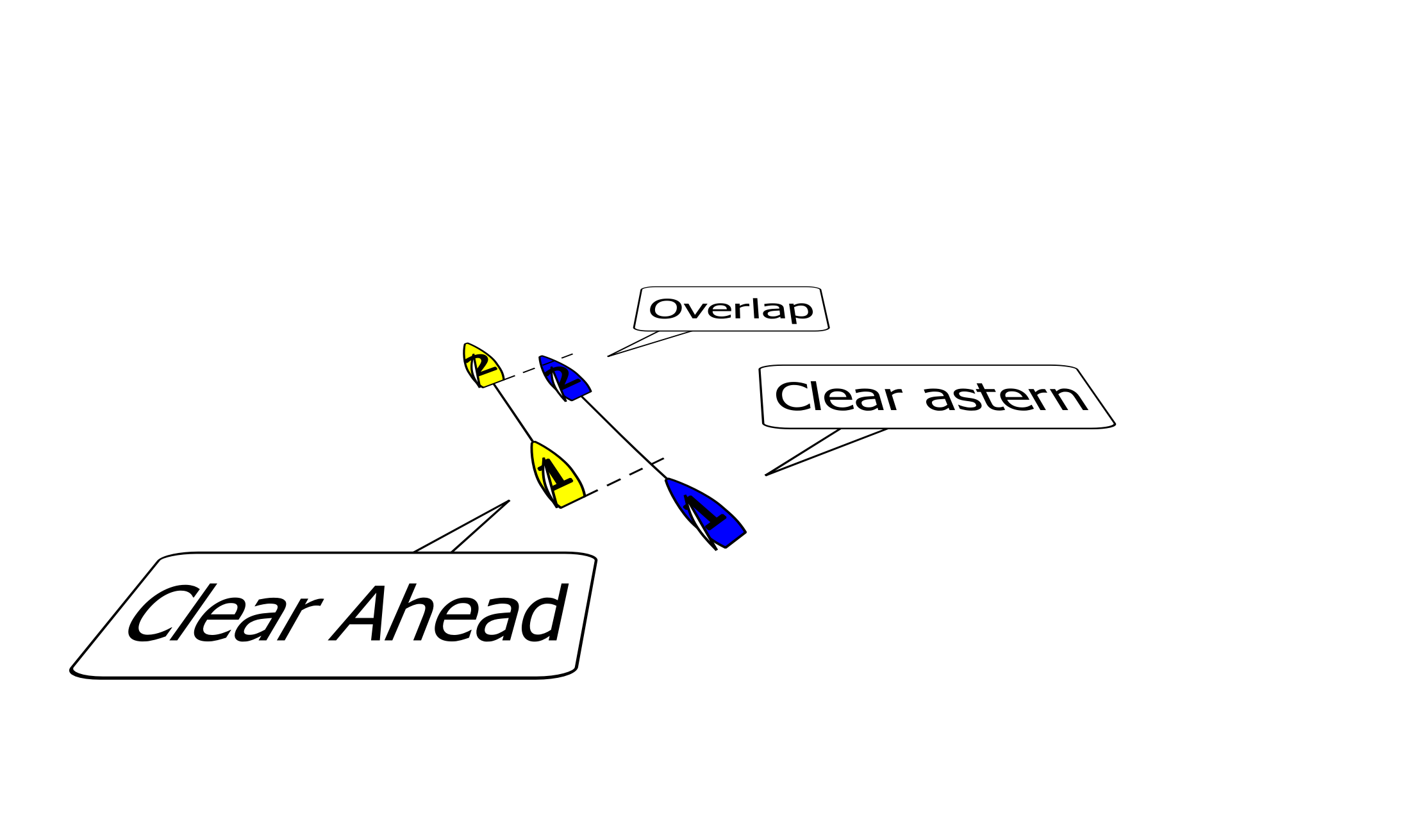
Clear astern, clear ahead and overlapped
Note that when the rules talk about “in normal position” it simply means that you are not allowed to manipulate your equipment to gain a tactical advantage. For example, letting out your spinnaker in order to establish an overlap.
The below example 2 reinforces 2 issues:
- Green is overlapped with yellow because green is no longer clear astern when her spinnaker (in normal position) is behind a line abeam of yellow’s aftermost point.
- If green was not in the picture, yellow and blue would not be overlapped. Blue’s spinnaker is not in a normal position.
- However, blue and yellow are overlap because the green boat in between blue and yellow overlaps both.
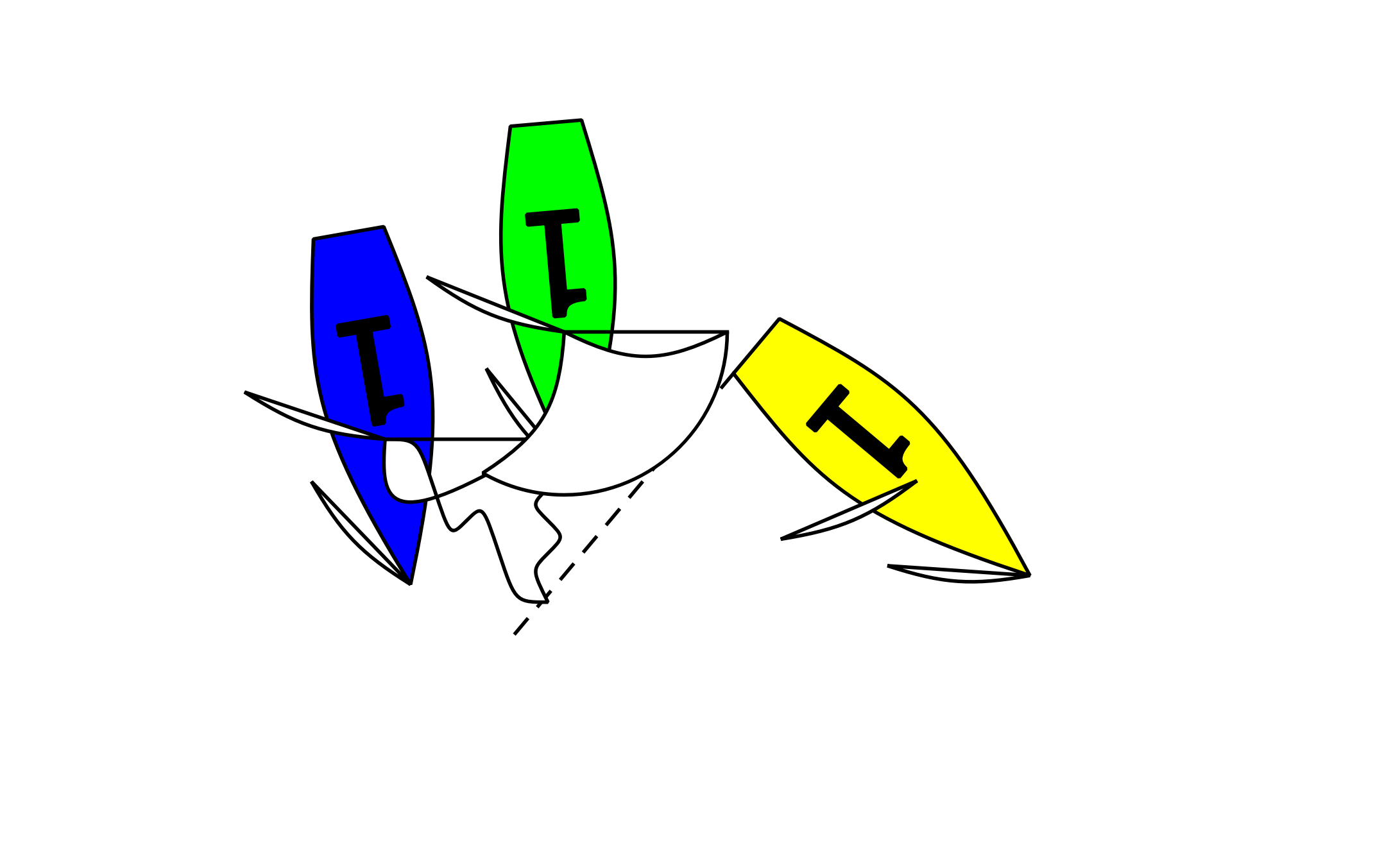
Equipment in normal position
The next important aspect of Rule 11 is the meaning of windward. We find this under the definitions in the rules.
A boat’s leeward side is the side that is or, when she is head to wind, was away from the wind. However, when sailing by the lee or directly downwind, her leeward side is the side on which her mainsail lies. The other side is her windward side. When two boats on the same tack overlap, the one on the leeward side of the other is the leeward boat. The other is the windward boat.
This is a bit confusing as it explains what leeward means and then refers to the opposite site as windward.
Essentially, it is the side from which the wind comes or the opposite side from which the mainsail is deployed when sailing downwind.
Note that in example 3 below, we have overlapped boats on the same tack. If they were on different tacks, Rule 10 will apply.
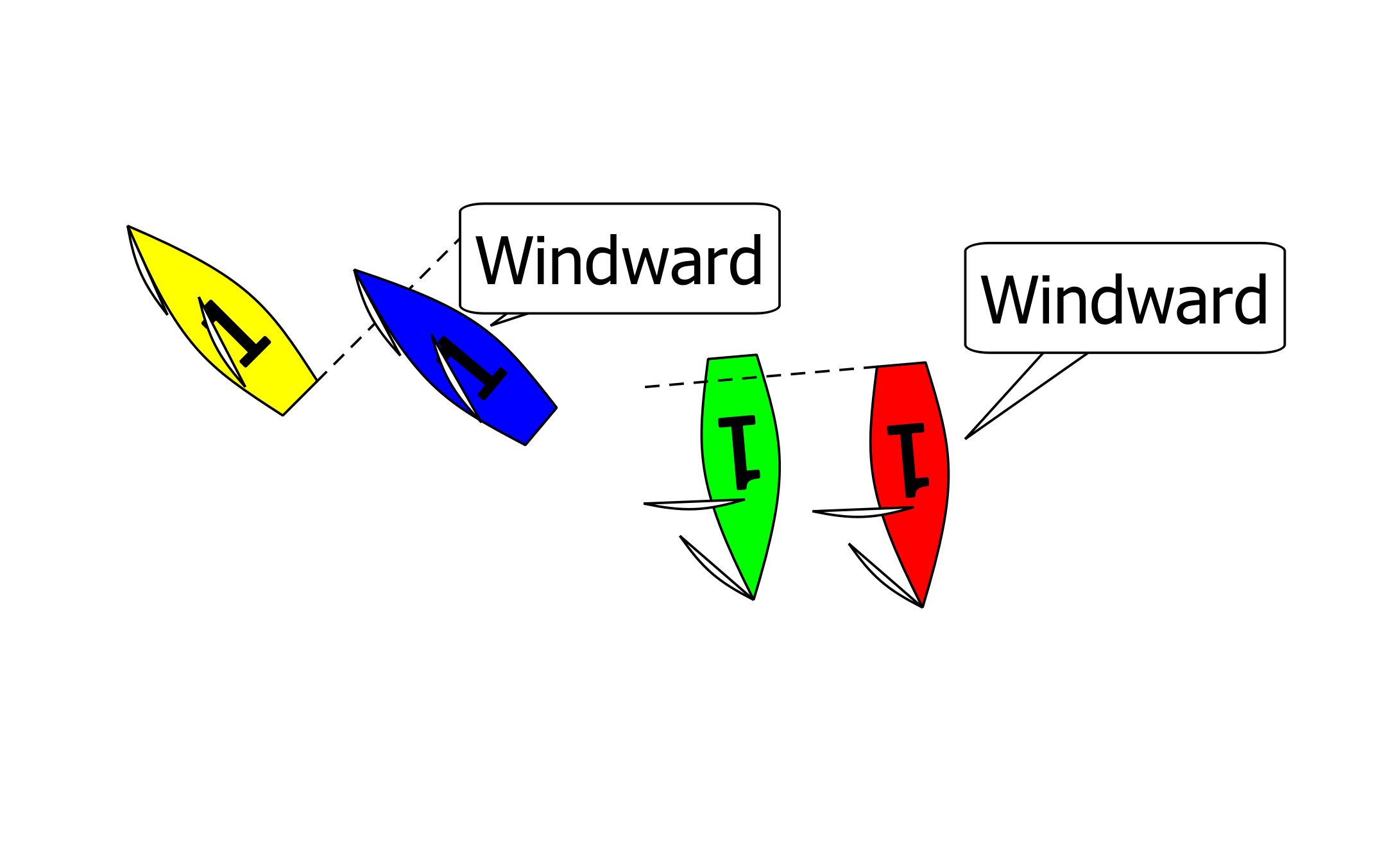
Windward boat keep clear
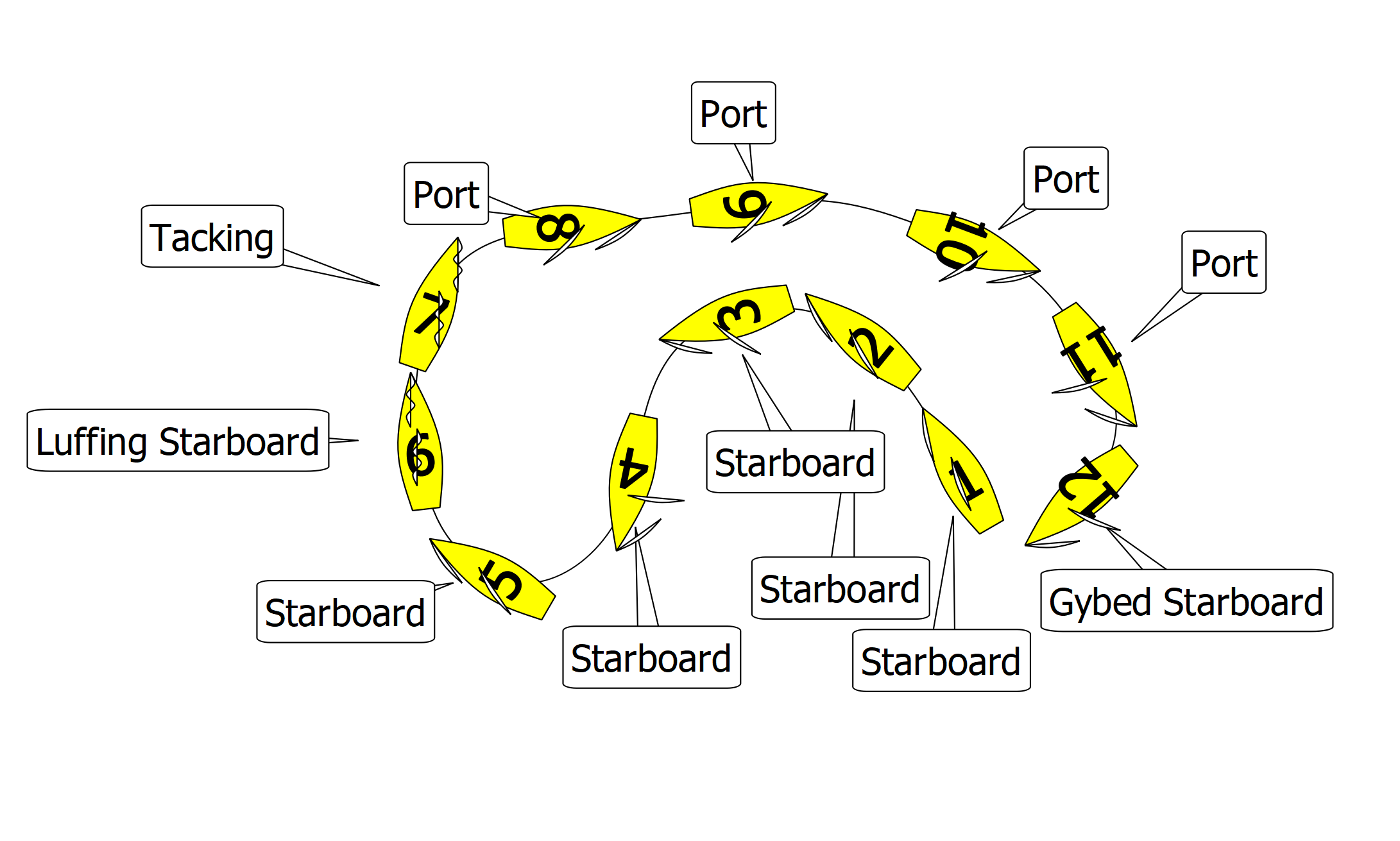
Tack port/starboard

Does Rule 11 apply?
NO, Rule 11 doesn't apply.
Scenario 2
Below, you find four boats trying to round the far marks through a gate-mark. Just applying Rule 11 (we cover the others later), which boats need to keep clear?

Rule 11 keep clear boat(s)?
Yellow and red need to keep clear under Rule 11!
On the other side, and for the same reasons, red needs to keep clear of green.
Scenario 3
The below scenario is a little confusing but try to determine which boat pairs are overlapped?

Who is overlapped with whom?
...they also overlap when a boat between them overlaps both...
On the other side, red is clearly overlapped with purple and purple is overlapped with light-blue. However, red in not overlapped with light-blue becuase as the boat in between light-blue is not overlapped with both red and purple.
Author
-

Rene is a keelboat instructor and sailing coach in the Mandurah area WA. He is also the author of several books about sailing including "The Book of Maritime Idioms" and "Renaming your boat".
View all posts

